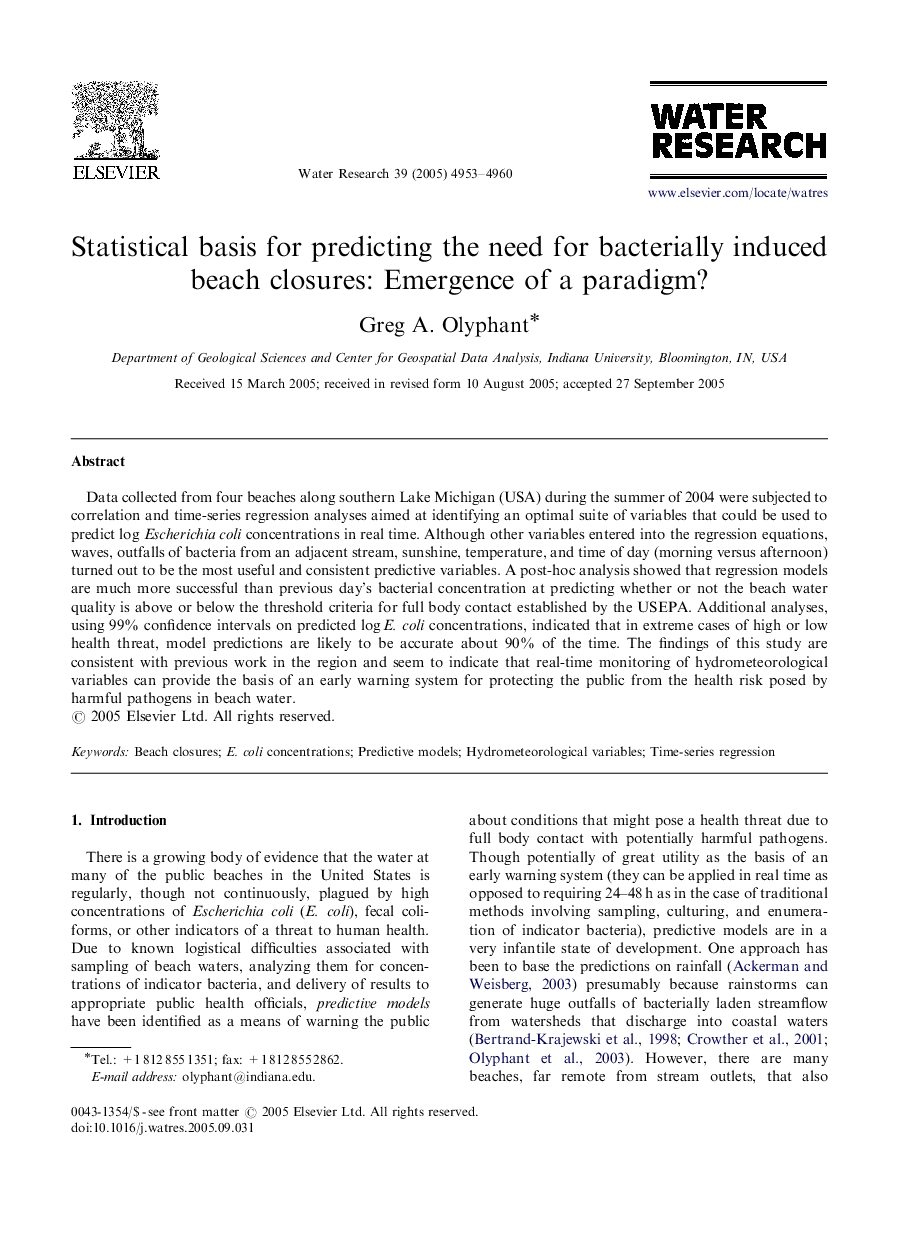| Article ID | Journal | Published Year | Pages | File Type |
|---|---|---|---|---|
| 4487468 | Water Research | 2005 | 8 Pages |
Data collected from four beaches along southern Lake Michigan (USA) during the summer of 2004 were subjected to correlation and time-series regression analyses aimed at identifying an optimal suite of variables that could be used to predict log Escherichia coli concentrations in real time. Although other variables entered into the regression equations, waves, outfalls of bacteria from an adjacent stream, sunshine, temperature, and time of day (morning versus afternoon) turned out to be the most useful and consistent predictive variables. A post-hoc analysis showed that regression models are much more successful than previous day's bacterial concentration at predicting whether or not the beach water quality is above or below the threshold criteria for full body contact established by the USEPA. Additional analyses, using 99% confidence intervals on predicted log E. coli concentrations, indicated that in extreme cases of high or low health threat, model predictions are likely to be accurate about 90% of the time. The findings of this study are consistent with previous work in the region and seem to indicate that real-time monitoring of hydrometeorological variables can provide the basis of an early warning system for protecting the public from the health risk posed by harmful pathogens in beach water.
